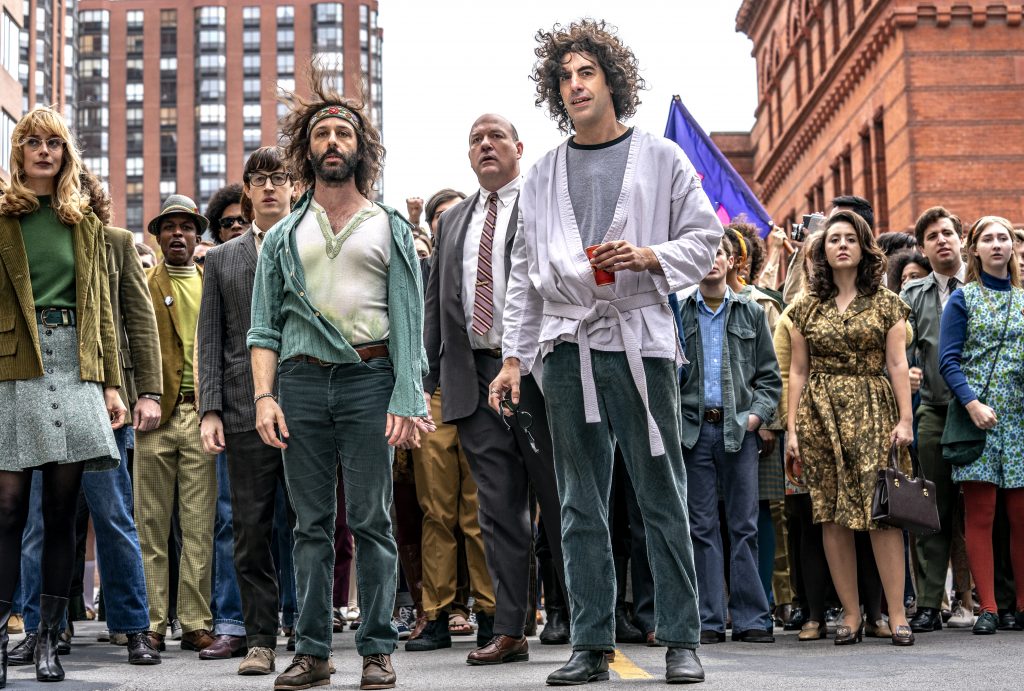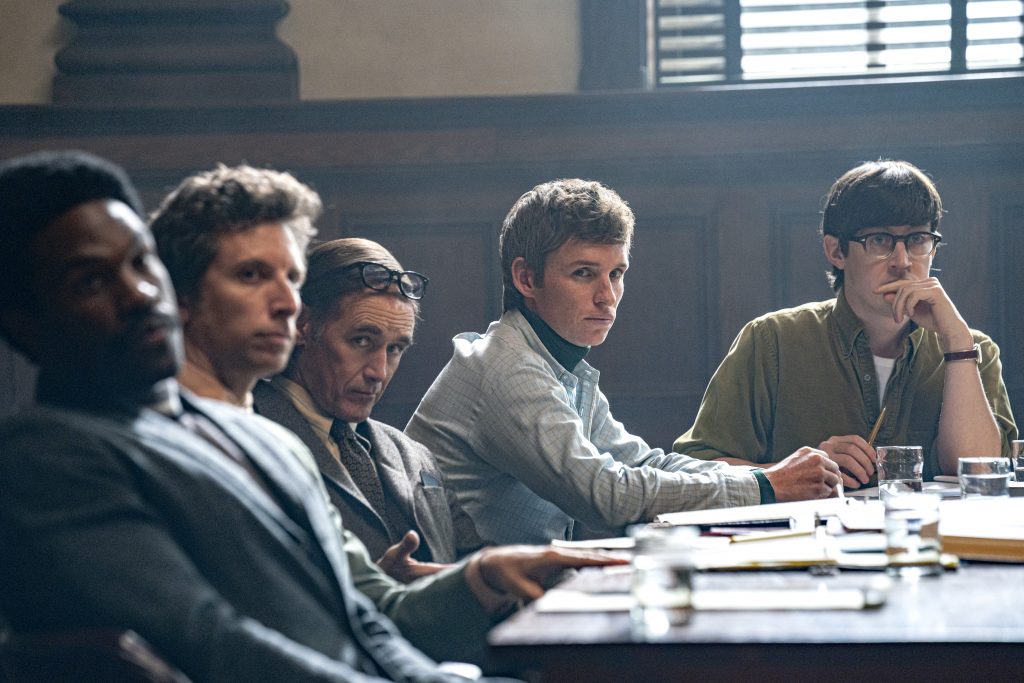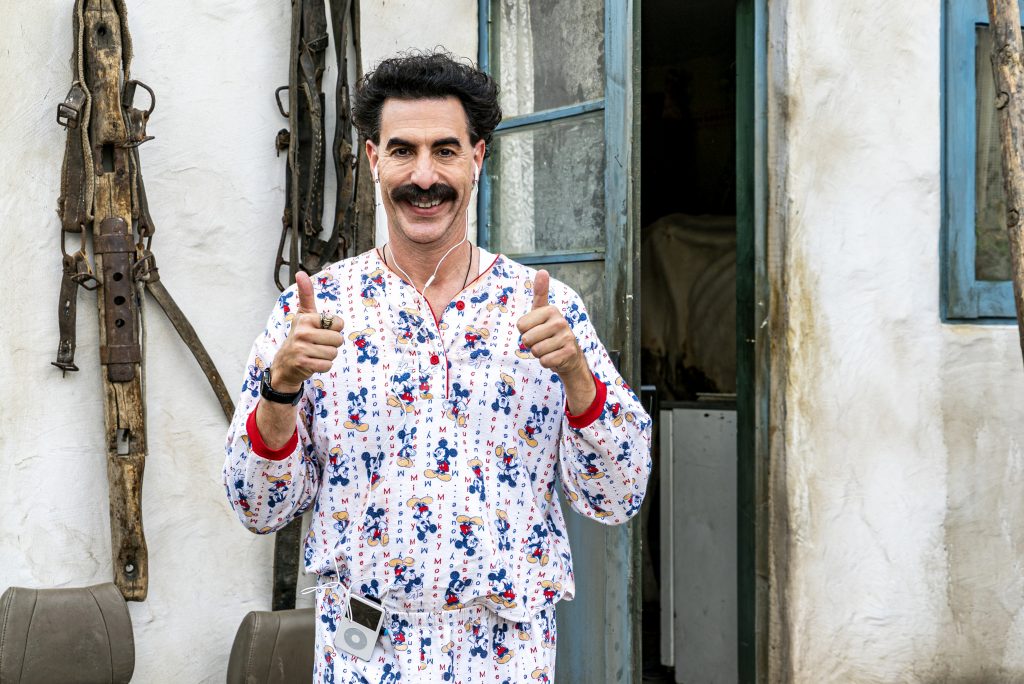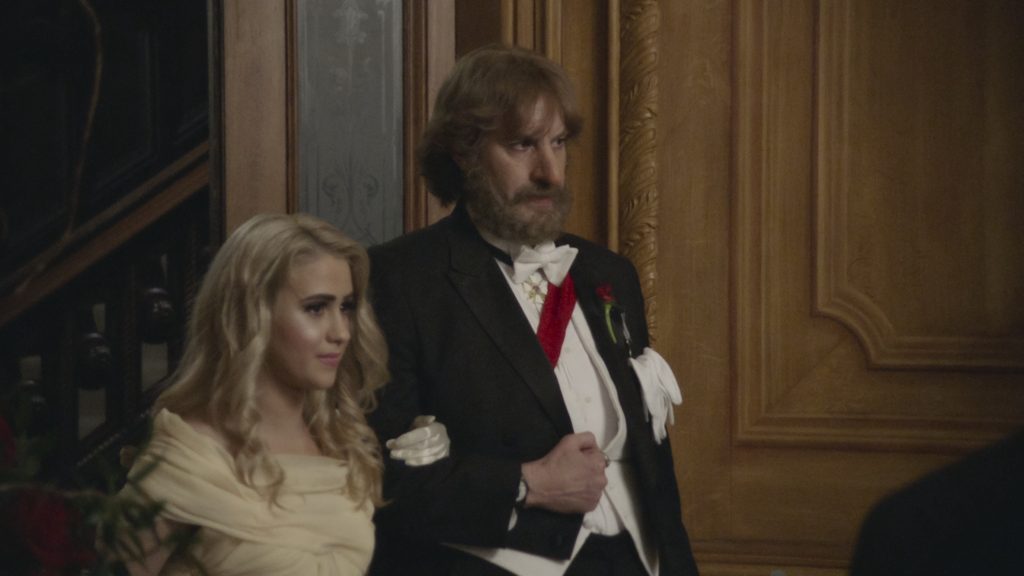June 16, 2021
by Carla Hay

Directed by Enrico Casarosa
Culture Representation: Taking place in an unnamed Riviera town in Italy, the animated film “Luca” features an all-white cast of characters portraying the working-class and middle-class.
Culture Clash: In a world where sea monsters can transform into humans when they’re on land, a teenage sea monster rebels against his parents’ rules by hanging out on land, and he makes plans to run away with another teenage sea monster who has become his best friend.
Culture Audience: “Luca” will appeal primarily to people interested in predictable but enjoyable animated films about family, friendship and self-identity.
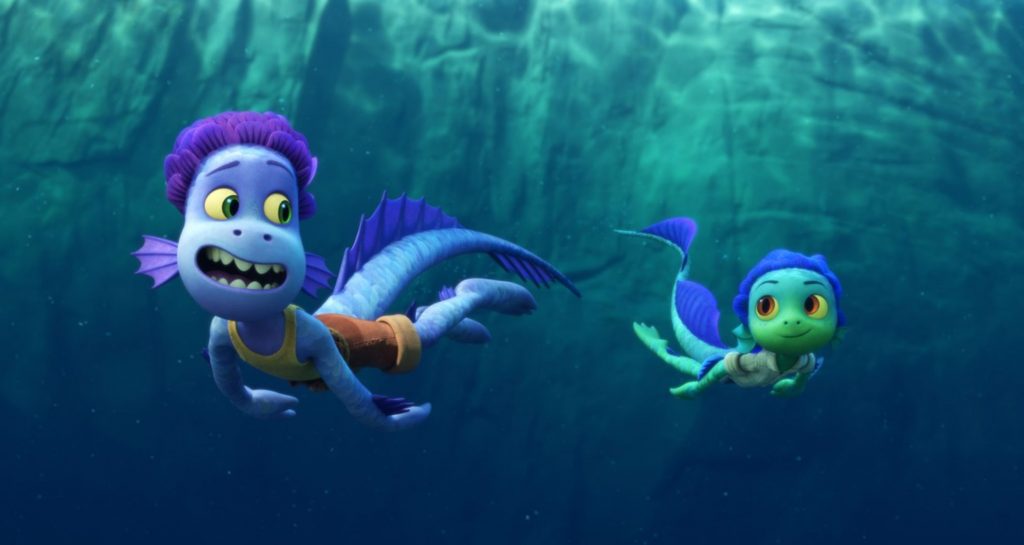
How do you know you’re watching a Pixar movie, besides the great visuals? The lead characters are usually male and struggling with identity/self-esteem issues, they go on an adventure with least one sidekick, and they find out the meaning of life with some tearjerking moments. The End.
Pixar Animation Studios’ “Luca” (directed by Enrico Casarosa) follows this same formula to mostly entertaining results in this story about sea monsters and humans. It’s not a groundbreaking animated film, but it’s a definite crowd-pleaser that can appeal to several different age groups. The underwater scenes in the movie are the most visually stunning, but it’s not too surprising, considering that Pixar is also the studio behind 2003’s far superior, Oscar-winning “Finding Nemo,” which was set primarily underwater. “Luca” spends most of the story on land.
Pixar, which is owned by Disney, sets itself apart from Disney Animation Studios by putting more emphasis on original stories about characters who want to feel comfortable with themselves for the first time in their lives. Therefore, the adventures in Pixar tend to have more at stake on a personal level than defeating an evil villain, because low self-esteem is often the story’s biggest villain. The visuals in Pixar films also tend to be more intricate and dazzling than Disney Animation films.
However, it’s concerning that when the world’s population and movie audiences are at least 50% female, Pixar continues to have a majority of feature-length movies where the stories are dominated by male characters. Maybe that’s because almost all Pixar movies are written and directed by men. “Luca” is no exception. The “Luca” screenplay was written by Jesse Andrews and Mike Jones.
Pixar films tend to be very male-centric for lead protagonists, whereas Disney Animation films have more of a gender balance in their lead protagonists. (Disney princesses. Need we say more?) Disney Animation also has a mix of films that are from original and adapted screenplays, since many classic children’s books and fairy tales have been made into Disney animated films.
“Luca” takes place in Italy in an unnamed town near the Riviera, which is populated by sea monsters that can transform into humans when they’re on land. Because human beings have a reputation for killing sea monsters, it’s become normal for sea monsters to fear and mistrust humans, just as many humans fear and mistrust sea monsters. Therefore, it’s not unusual for parent sea monsters to teach their children never to go on land.
That’s the case with Luca Paguro (voiced by Jacob Tremblay), an adolescent sea monster, who sounds like a boy who’s about 13 or 14. His overprotective parents—Daniela Paguro (voiced by Maya Rudolph) and Lorenzo Paguro (voiced by Jim Gaffigan)—have instilled strict rules that Luca can never go on land (anything above the sea is called “the surface”) because it’s too dangerous. Daniela is more paranoid than Lorenzo is about Luca going on land because she’s certain that Luca will be hurt or killed if he does.
Luca’s parents keep him so sheltered that they don’t tell him that sea monsters have the ability to transform into humans when they’re on land and can go back to being sea monsters when underwater. If a sea monster is on land, and water touches a sea monster’s body, the sea monster’s body takes on sea monster physical characteristics, depending on how much water has made contact with the body. And you know that’s going to happen in this movie when Luca gets into some precarious situations.
Luca’s crusty-voiced grandmother, who doesn’t have a first name in the movie and is called Grandma (voiced by Sandy Martin), lives in the Paguro household. Grandma has been to the surface, where she says she hung out with humans to do things like play card games, so she isn’t afraid of the surface like Luca’s parents are. In one early scene in the movie, the family is having a meal together around a dining room table when Grandma starts to tell a happy memory of her time on the surface. However, Daniela gets upset and verbally shuts down Grandma by ordering her never to talk about her surface experiences to Luca.
Luca is a lonely sea monster who doesn’t have any sea monster friends underwater. He spends his days hanging out with fish. His favorite is a fish named Giuseppe. But since these fish can’t talk, Luca is starting to feel isolated. Luca secretly wishes that he could go to school with other kids, but his parents are apparently homeschooling him. His father breeds and handles show crabs for a living, and Luca is expected to do the same thing when he becomes an adult.
One day, Luca sees a young male sea monster in a diving outfit. At first, Luca is afraid because he thinks the individual in diving gear is a human. But the sea monster reveals himself to be a teenager who sounds like he’s about 15 or 16 years old. His name is Alberto Scorfano (voiced by Jack Dylan Grazer), who ends up capturing Luca with a fishing hook and bringing Luca to the surface.
It’s how a terrified Luca finds out for the first time that he has the ability to become a human when he’s on land. Alberto lives in an abandoned castle tower, and he says that his single father is frequently away because of the father’s busy job demands. There’s no mention of Alberto’s mother in the story.
Alberto is a bit of a daredevil and mischief maker. In the movie’s opening scene, two fisherman—elderly Tommaso (voiced by Gino La Monica) and young Giacomo (voiced by Giacomo Giannotti)—are on a boat at night. Giacomo is concerned about fishing in this part of the water, because he’s heard stories about deadly sea monsters living in the area. Tommaso is dismissive of these stories. But then, a sea monster (which viewers later find out is Alberto) steals some of items from the boat, including a gramophone, and the two fishermen chase him away.
In his newfound human body, Luca feels scared but excited. Alberto teaches Luca how to walk on two feet and other ways to navigate himself as a human. The two boys end up becoming fast friends. Luca sneaks off to spend time with Alberto as much as possible while his parents are working or asleep. (Luca uses a makeshift decoy to fool his parents if they’re watching from far away.) However, Luca knows that what he’s doing is strictly forbidden by his parents. And it’s only a matter of time before they find out his secret.
One of the first things that Alberto tells Luca when they meet is that everything is better above the surface. Alberto also says that the Vespa scooter is “the greatest thing that humans ever made.” Alberto even has a poster that says that a Vespa scooter equals freedom. It’s Alberto’s dream to have a Vespa scooter so that he can travel around the world. Soon, this dream becomes a shared obsession for Alberto and Luca.
In order to get the money to buy a new Vespa and start this dream adventure lifestyle, Alberto wants to enter a scooter racing contest called the Portorosso Cup, which is held on the other side of the sea where the main part of the town is. At first, Luca is hesitant, but Alberto convinces him to be his racing partner in the Portorosso Cup. Alberto builds a makeshift scooter to enter the contest.
When Luca’s parents find out that he’s been sneaking away to go on land, they punish him by telling him that Luca will be temporarily sent to live with his stern Uncle Ugo (voiced by Sacha Baron Cohen), who doesn’t seem to like children very much. Luca’s reaction? He runs away from home. Luca is now more motivated to win the contest so that he and Alberto can run away and start their adventurous life together without any parental supervision.
During Luca and Alberto’s blossoming friendship, Alberto teaches Luca how to get rid of self-doubt, which Alberto calls Bruno. There are many references in the movie to Bruno, which is the type of self-doubt that causes naysayer voices in someone’s head that tell people they can’t do something or that they’re not good enough. Thankfully, the movie doesn’t have actual Bruno voices because that would be too tacky and distract from the story.
The reigning Portorosso Cup champ is an arrogant bully named Ercole Visconti (voiced by Saverio Raimondo), who has won this contest several times in a row. And he has no intention of ever losing. Ercole predictably has two male sidekick followers—a brunette named Guido (voiced by Lorenzo Crisci) and a blonde named Ciccio (voiced by Peter Sohn)—who don’t speak for most of the movie and passively follow Ercole’s orders.
During the time that Alberto and Luca spend time in the town among humans, Alberto and Luca befriend a human teenager, who’s close to Luca’s age. Her name is Giulia Marcovaldo (voiced by Emma Berman), who is friendly and adventurous. She comes to the town every summer to live with her divorced father Massimo Marcovaldo (voiced by Marco Barricelli), who generously gives the three teens the money that they need for the Portorosso Cup entry fee.
Of course, getting to the Portorosso Cup isn’t without its problems. Ercole wants to thwart these young upstarts and does what he can to ruin their chances of winning the contest. Luca’s parents find out that he’s run away, and they go to the town to try to find him. Luca sees them, and has to spend a great deal of the movie trying to hide from his parents.
Meanwhile, Alberto gets jealous when Luca and Giulia start to become close. Arguments predictably ensue. In the preparations for the Portorosso Cup, the tables somewhat turn as Luca becomes more confident and Alberto becomes more insecure. And the Portorosso Cup isn’t just about winning, but in this movie it becomes a way for Luca, Alberto and Giulia to learn about how they can handle obstacles and what they really want to get out of life.
One of the best things about “Luca” is that it doesn’t clutter the movie with too many characters. The story is also very easy to follow, although it’s not very original, since a lot of animated/family films have already done the “high-stakes contest” as a plot device to have the heroes face off against the villains. All of the actors give fine performances, although it’s too bad that comedian Baron Cohen essentially has just a cameo as Uncle Ugo, whose time on screen is so brief it seems like a waste of Baron Cohen’s talents.
The most irritating flaw of “Luca” is its unrelenting promotion of Vespa. It comes off as aggressive shilling/product placement. And it somewhat taints the movie’s story because Vespa is elevated as this product brand that is the equivalent of freedom and happiness. It’s a shallow and materialistic message, even though the movie has a larger message of self-acceptance that’s more important.
The mistrust and prejudice that some humans and sea monsters have for each other are obvious metaphors of real-life bigotry. Just like in real life, some individuals are narrow-minded and hateful, while others are not. However, the movie has mixed messages about “assimilation” where individuals in the minority feel like they have to be more like individuals in the majority in order to be accepted.
Some viewers might have different opinions about what kinds of message this movie might be sending where a sea monster wants to live as a human. Alberto says in the beginning of the movie that human life on land is superior to animal life in the sea. That’s a message that probably won’t endear “Luca” to animal rights activists.
However, people need to see the movie to find out how these issues of species superiority and inferiority are handled. Because sea monsters can turn into humans, the movie takes the interpretation that they’re almost like biracial people who feel pressure to identify as one race over another. It’s enough to say that the main characters in “Luca” find out that real freedom comes from not being afraid to be who you are and not letting others put you into a narrow box of what they think you should be.
Disney+ will premiere “Luca” on June 18, 2021. The movie will have an exclusive, limited-run engagement at Disney-owned El Capitan Theatre in Los Angeles, beginning June 18, 2021.



